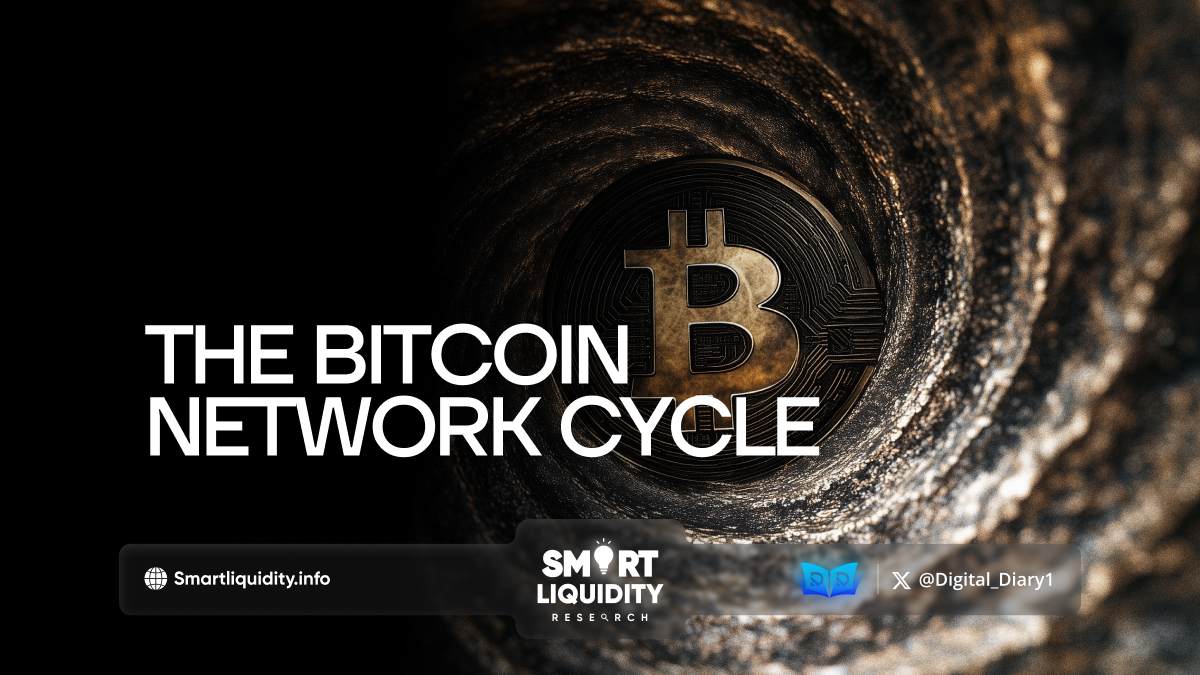The Bitcoin Network Cycle


Bitcoin’s journey from obscurity to one of the most transformative financial assets has captivated tech enthusiasts, financial experts, and even everyday savers. But behind Bitcoin’s explosive price cycles and news-making price milestones lies a lesser-known, complex engine that sustains it: the Bitcoin Network Cycle. Understanding this cycle unveils insights into why Bitcoin behaves the way it does, what fuels its growth, and how the broader blockchain economy is evolving with it.
1. The Birth of Blocks: Mining and the Genesis of Bitcoin Supply
At the heart of the Bitcoin network lies the concept of mining, a process that does far more than generate new Bitcoin. Mining ensures security, builds trust, and fortifies the network against fraud. When miners solve cryptographic puzzles, they confirm transactions and add new blocks to the blockchain, creating an unbreakable ledger of every Bitcoin transaction. As a reward, miners receive newly minted Bitcoin, releasing a controlled supply of coins into circulation.
This controlled issuance rate gives Bitcoin its finite supply—a fundamental characteristic that strengthens its appeal as “digital gold.” Every four years, the reward for mining halves in an event known as the “Halving.” This predictable supply reduction gradually reduces Bitcoin’s inflation rate, further fueling its scarcity narrative. Each Halving sets off a significant phase in the Bitcoin Network Cycle, acting as a catalyst for price increases and triggering a new cycle stage.
2. Accumulation Phase: Building Confidence and Adoption
Following a Halving event, Bitcoin typically enters a phase known as accumulation. During this stage, savvy investors, institutional players, and Bitcoin enthusiasts acquire Bitcoin at relatively stable prices. Confidence in Bitcoin’s value continues to grow as mainstream adoption and technological advancements solidify Bitcoin’s reputation as a viable store of value.
This phase often coincides with infrastructure advancements, such as the development of second-layer solutions (e.g., Lightning Network) that improve Bitcoin’s scalability and usability for everyday transactions. Here, Bitcoin is adopted by more businesses, accepted by major financial institutions, and embraced by millions of individuals worldwide. The accumulation phase sets the stage for the next stage in the cycle.
3. The Bull Run: Momentum, Media, and Market Euphoria
As adoption grows and demand outstrips supply, Bitcoin prices begin to rise, sparking what’s commonly referred to as the “Bull Run.” This phase is marked by high media coverage, where Bitcoin starts appearing in mainstream news, attracting the attention of both investors and speculators. As prices continue to surge, the network reaches new heights, and public interest reaches fever pitch. At this stage, individuals from all walks of life are eager to participate, leading to an influx of new investors.
During this period, Bitcoin’s price can experience exponential gains, causing more seasoned holders to take profits while new entrants buy in, fueled by “FOMO” (Fear of Missing Out). Speculation runs high, often pushing the market to unsustainable levels. The euphoria phase typically culminates in a price peak, marking the beginning of a new chapter in the cycle.
4. Correction and Consolidation: Navigating Volatility and Regulation
When the market reaches its peak, the exuberance often proves unsustainable, leading to a phase of correction. Here, prices begin to decline, sometimes sharply, leading to a period of fear and uncertainty in the market. Many newcomers panic-sell, while seasoned investors view it as an opportunity to re-accumulate. This period of correction is crucial as it separates speculative traders from long-term holders, reinforcing Bitcoin’s resilience and revealing its dedicated base of supporters.
In addition to price adjustments, the consolidation phase often brings a renewed focus on regulation. Governments and financial institutions start paying closer attention, which leads to a series of regulatory conversations around taxation, compliance, and anti-money laundering measures. These discussions are essential for Bitcoin’s long-term growth, as they lay the groundwork for increased legitimacy and broader acceptance.
5. The Halving Reset: Sparking a New Cycle
At the end of each cycle, the stage is set for another Halving event. With each Halving, the Bitcoin Network Cycle resets, creating renewed interest and sparking anticipation among investors. The reduced supply inflation triggers a fresh round of accumulation and prepares the network for another cycle of growth, innovation, and adoption.
The Halving acts as a programmed economic event that serves to regulate supply, ensuring Bitcoin’s scarcity increases with time. This element of built-in scarcity continues to attract new waves of investors, renewing interest in the network and creating a cycle of growth that has repeated with remarkable consistency since Bitcoin’s inception.
6. Long-Term Impact: Shaping the Future of Finance
The Bitcoin Network Cycle demonstrates the intricate balance between supply, demand, and market psychology. Over time, each cycle reinforces Bitcoin’s place as a deflationary, decentralized asset that resists government control and inflation. The result is a financial ecosystem that continuously evolves, embracing technological advancements and appealing to a growing audience of people who value financial sovereignty.
Through each phase of the Bitcoin Network Cycle, Bitcoin gains greater significance, transitioning from a niche technological experiment to a global financial instrument. As governments and central banks explore digital currencies, and as traditional financial systems inch closer to blockchain integration, Bitcoin’s decentralized model offers a powerful alternative—a way to participate in an open and borderless economy.
The Bitcoin Network Cycle in Retrospect
The beauty of the Bitcoin Network Cycle is its predictability and resilience. Each cycle brings new participants, refines the network, and fortifies Bitcoin’s role as a catalyst for financial transformation. As the network grows, so does its capacity to disrupt and redefine traditional notions of money, value, and security. Bitcoin’s path isn’t just a financial trend; it’s a technological revolution, a social movement, and a glimpse into the future of finance.




